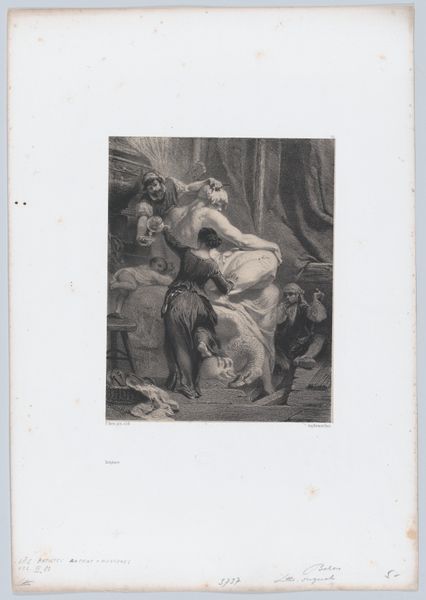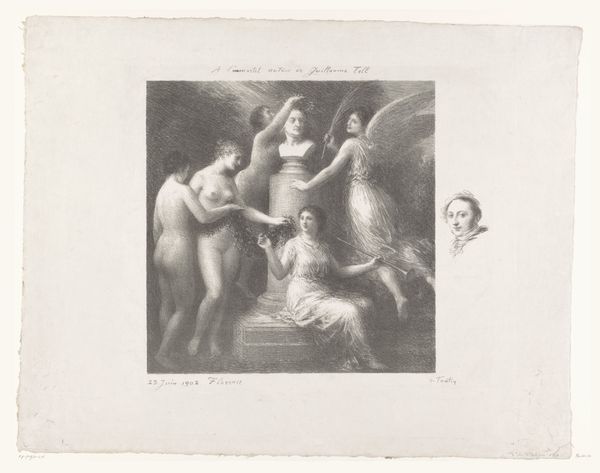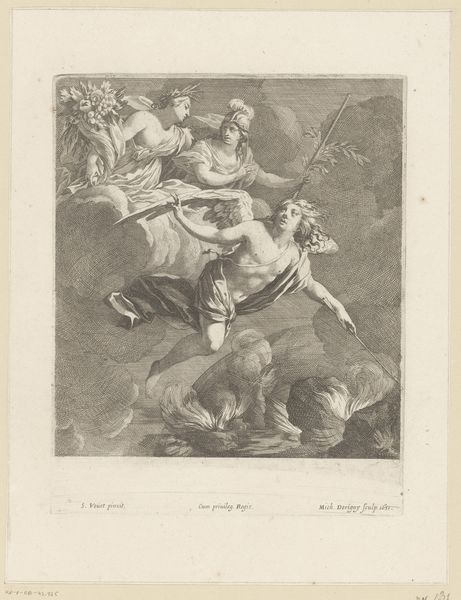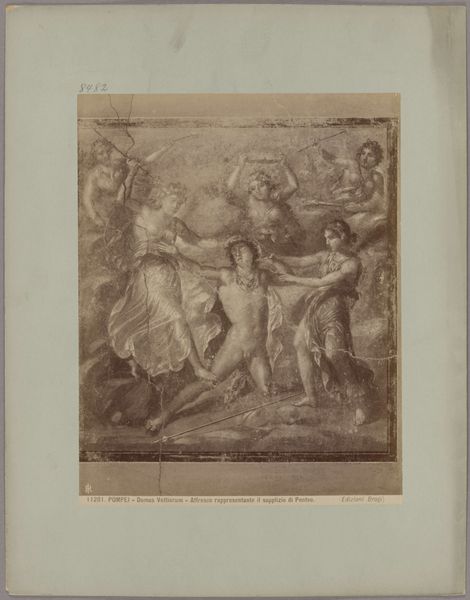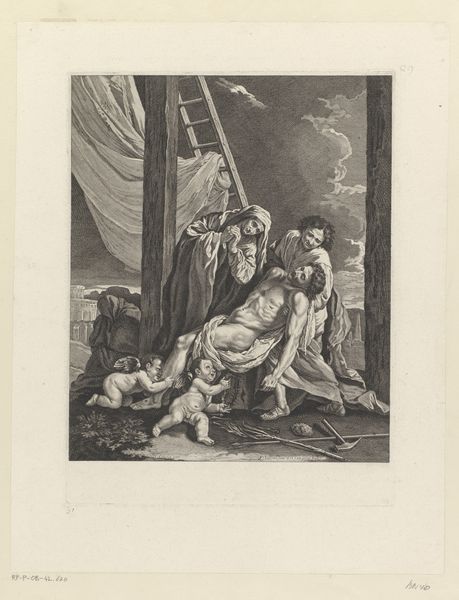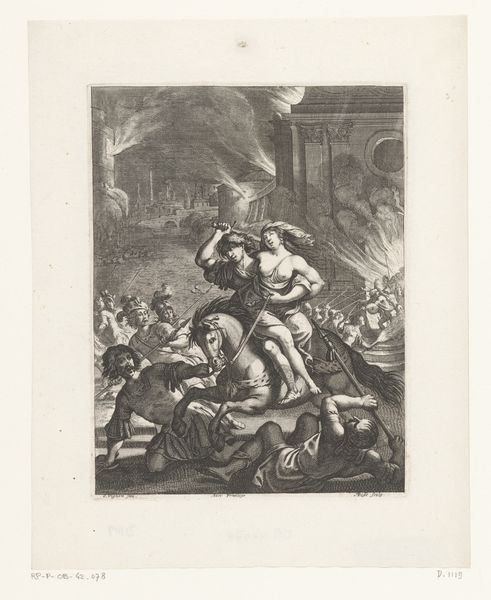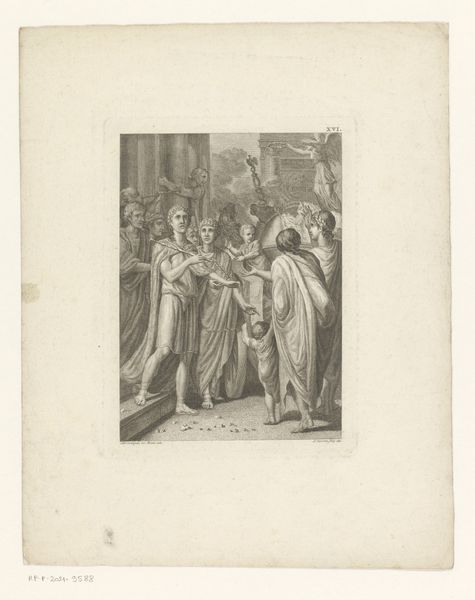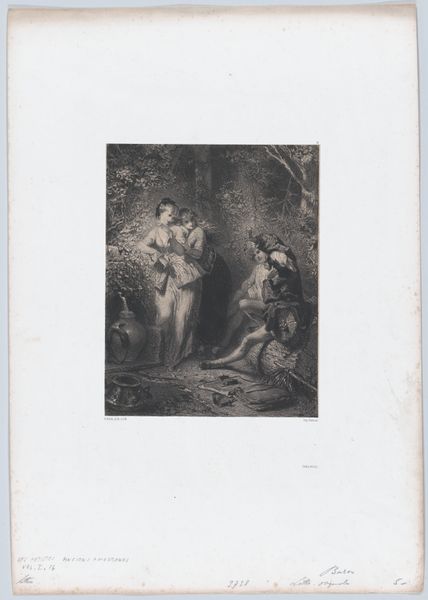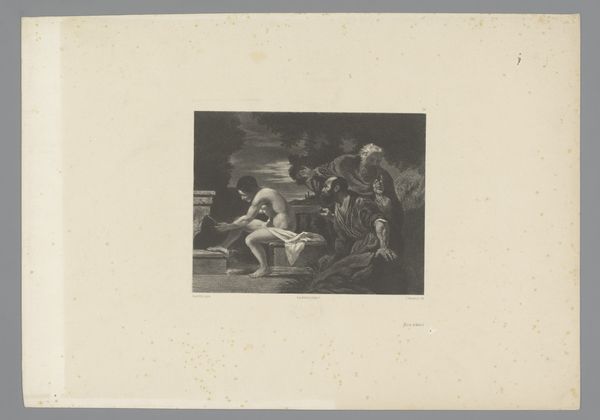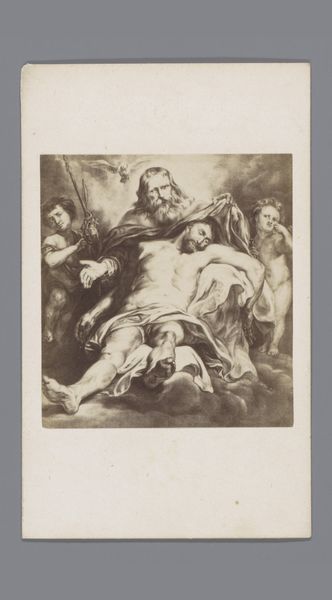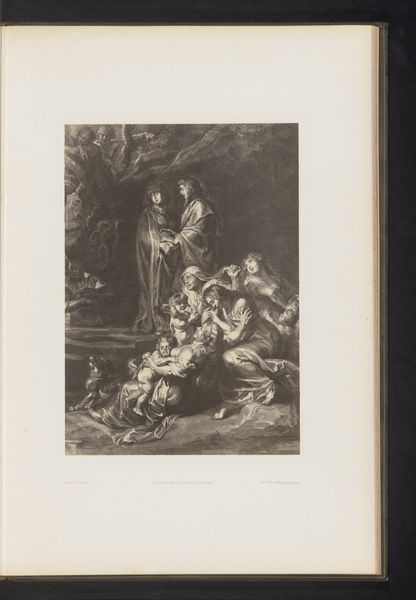
Fotoreproductie van het schilderij Madonna omringd door heiligen, van Rubens 1858 - 1866
0:00
0:00
Dimensions: height 106 mm, width 65 mm
Copyright: Rijks Museum: Open Domain
Curator: This photographic reproduction, dating from between 1858 and 1866, presents us with a fascinating glimpse into the reception of Peter Paul Rubens’s work in the mid-19th century. The work attempts to recapture the painting "Madonna surrounded by saints," and comes to us as an allegory captured in sepia tones. Editor: My first thought is how the translation from paint to photography flattens the dramatic baroque composition, somewhat diminishing the impact of Rubens' original. It almost mutes the dynamism, although perhaps this was a deliberate attempt at historical appropriation. Curator: Exactly! Consider the burgeoning medium of photography at the time and its role in disseminating art to a wider audience. This image served a crucial function, providing access to art that was previously only available to a select few who had the privilege to physically access museum spaces, or, frankly, who had the resources to commission painted copies. Editor: So, democratizing art through reproduction, perhaps? But the context also includes considering which artworks were selected for photographic reproduction, how they were presented, and how those decisions reinforced existing power structures within the art world itself. Note also the very presence of exclusively white subjects within the scene presented; consider this through a post-colonial lens. Curator: Absolutely. And the very act of selecting "Madonna surrounded by saints" speaks volumes about Victorian values and the role of religious imagery in shaping societal norms. This print becomes a complex site where religious allegory intersects with the emerging culture of mechanical reproduction and its influence on cultural and social discourses. The family values promoted become even more poignant because it concerns the iconic Christian family, highlighting a particularly charged message in post-enlightenment European society. Editor: Ultimately, looking at this photographic reproduction is not just about Rubens’ original. Instead, it gives us access to how art functions within culture, shaped by institutional agendas and socio-political ideologies—something so relevant today in our digital world, in which image saturation is rife. Curator: I agree; reflecting on this photography has amplified my understanding of access, artistic influence and dissemination. It forces us to ask what truly changes when a painting is transferred through the eye of the camera? Editor: Precisely, prompting a vital, and much needed conversation about representation, accessibility, and the continuing echoes of historical biases.
Comments
No comments
Be the first to comment and join the conversation on the ultimate creative platform.

